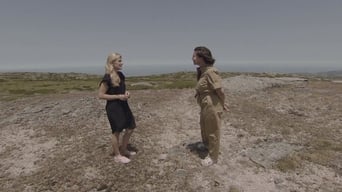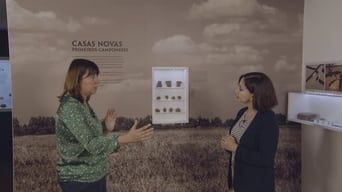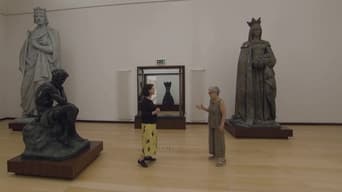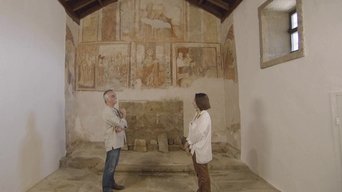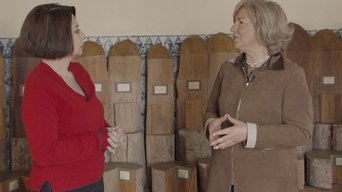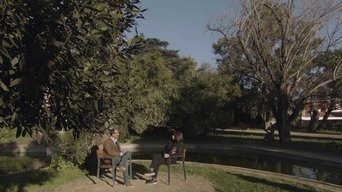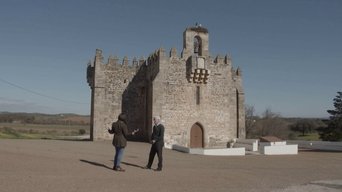Guided Tour Season 10
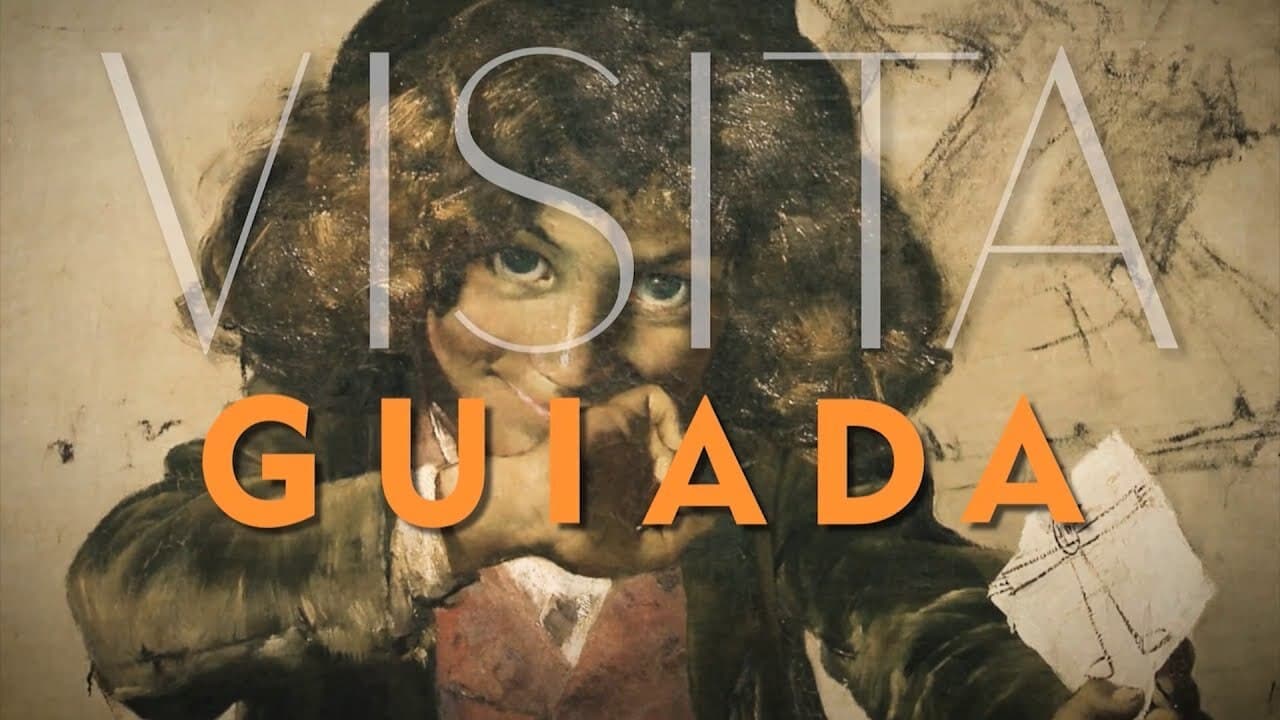
Guided Tour is a television and radio program about the treasures of the Portuguese cultural heritage. Treasures with recognized universal value, pieces that any western country would be proud to integrate into its heritage, and little known to the Portuguese. From a silver goblet with Mozarabic decoration and a thousand years old to a cloister that is referred to as a masterpiece of European Renaissance, passing through a collection of African art classified as one of the best in the world, the nature of objects, their context geographic location and historical time vary from episode to episode.
Watch NowWith 30 Day Free Trial!
Guided Tour
2014 / NR
Guided Tour is a television and radio program about the treasures of the Portuguese cultural heritage. Treasures with recognized universal value, pieces that any western country would be proud to integrate into its heritage, and little known to the Portuguese. From a silver goblet with Mozarabic decoration and a thousand years old to a cloister that is referred to as a masterpiece of European Renaissance, passing through a collection of African art classified as one of the best in the world, the nature of objects, their context geographic location and historical time vary from episode to episode.
Watch Trailer
With 30 Day Free Trial!
Guided Tour Season 10 Full Episode Guide
Constitutionalism was endorsed in Portugal by D. João VI, in 1822, almost a hundred years before the implantation of the Republic. Along the way, the country experienced very tumultuous times, which culminated in the Civil War (1828-1834), led by the two sons of D. João VI: D. Pedro, the liberal, and D. Miguel, the absolutist. Following the victory of D. Pedro, the already uninhabited Monastery of São Bento da Saúde, a colossus by the architect Baltazar Álvares, is chosen to settle there (1834) the two chambers of those who, at the time, represented the Portuguese. Since the 1974 revolution, the Assembly of the Republic has finally become the body of universal representation for the Portuguese people. Knowing the spaces and works of art of the so-called São Bento Palace is to know part of the History of Portugal. A guided tour by the historian Cátia Mourão and the ex-parliamentarian Guilherme de Oliveira Martins.
Winner of the liberal cause in Portugal and first emperor of Brazil, D. Pedro, the heir to King D. João VI, was one of the most controversial figures in the History of Portugal. And he was the only one who established with the inhabitants of Porto, by tradition averse to kings and nobles, a relationship so strong that, hours before he died, he decided to donate his heart to the city of Porto. It is the story of this unique relationship and the troubled years that mediated the transfer of the Portuguese court to Brazil, in 1808, and the end of the civil war, in 1833, that the historian Eugénio dos Santos, biographer of D. Pedro IV, goes to us. tell by some of the places that were the scene of the presence of D. Pedro in Porto, between the decisive years of 1831 and 1833.
Until the penultimate decade of the century. XIX, the highest mountain range in mainland Portugal was still an unexplored territory. If we do not count with the few shepherds who dared in their rugged peaks and with a pair of foreign naturalists, no one until then knew Serra da Estrela. In 1881, six years after its creation, the Lisbon Geography Society organized an expedition to Serra da Estrela with sixty scientists from the most diverse disciplines - from botany to medicine, from zoology to meteorology. The expedition was led by Hermenegildo Capelo, the hero of the crossing of Africa, and the expeditionaries' adventures were many. On the trail of this fantastic adventure, a visit by the hand of researcher Helena Gonçalves Pinto and José Conde, biologist at the Serra da Estrela Interpretation Center.
Since the 1980s. XX that this territory has been the subject of successive archaeological works by specialists in prehistory. Among many other surprising discoveries, there are traces, with 7,500 years old, of primitive peasant societies. In other words, it is safe to say that the Neolithic, a process that was underway in the Near East 10,000 years ago, occurred, in its most complete version, in the Sorraia Valley. The amazing archaeological discoveries of Professor Victor Gonçalves and Ana Catarina Sousa, our guides on this visit, allow us to identify the routes of the Neolithic movement in the Mediterranean and Southern Europe.
Founded in 1639 to house a congregation of Irish Dominican nuns, the Convent of Nossa Senhora do Bom Sucesso also became a school almost 200 years ago, but it only stopped being a convent house in 2016, when the last Irish nuns took to the house- mom. Son of the wars between Protestants and Catholics in century Ireland. XVII, this convent located in Belém, was protected by the Crown from the first moment and built on a farm donated by a Portuguese noblewoman. With erudite architecture and a sumptuous church, this complex resisted the 1755 earthquake almost unscathed and has never ceased to be inhabited and functional since its foundation. Guided tour by Ana Cristina Mariz Fernandes, former student and director of the school, and by art historian Miguel Soromenho.
The result of a local civic initiative, this museum from the 1930s. XX brings together the largest collection of paintings by José Malhoa. But not only. The first generation of Portuguese naturalists, as well as their successors are well represented in this space created from scratch for this purpose. Rafael Bordalo Pinheiro, another artist with strong connections to Caldas da Rainha, presents himself as a monumental (and unexpected) creation. The celebratory sculpture by Leopoldo de Almeida and Francisco Franco also finds its place in this museum that was once considered the best contemporary art museum in the country. A guided tour by Art History Professor Raquel Henriques da Silva, the executive coordinator of the Art History Institute at Universidade Nova de Lisboa.
During the century. In the 16th century, fresco painting artists worked intensively on the Trasmontana streak, on both sides of the border, enriching churches, chapels and chapels. There are dozens of cases that have been identified, often hidden behind later altarpieces. In the Chapel of Santo Cristo de Picote and in the Hermitage "Os Santos" conservation and restoration campaigns were carried out that confirm the hypotheses about the unique characteristics of fresh painting in this region of the Iberian Peninsula. A surprising visit by Joaquim Inácio Caetano, the conservator-restorer who took care of these two findings.
A library with ten thousand volumes is an expressive library anywhere in the world. If we consider that a xiloteca is characterized by gathering and classifying samples of different woods, we must recognize that the collection of ten thousand copies of the tropical xiloteca stored in the Calheta Palace is exceptional. All the more so since many of the botanical species present here have already become extinct in nature. This surprising collection, today under the responsibility of the University of Lisbon, was brought together over a hundred years, with particular relevance to the years of scientific missions that the Estado Novo promoted in the so-called "Portuguese Africa" during the 40s, 50s and 60th century. XX. A guided tour by Fernanda Bessa, curator and responsible for this xiloteca.
The riverside area of Belém, in Lisbon, has, over the centuries, been able to successfully host plant species of origins as diverse as Northern Europe, South America or Japan. In the Tropical Botanical Garden, for example, the pines of the islands of São Tomé and Príncipe flourish with more exuberance than in the original territory. To know the history of this beautiful garden is to know part of the history of Portugal's investment in seeking knowledge about overseas agricultural products. From D. João V to the State of Salazar. A guided tour by the coordinator of the team that restored the Tropical Botanical Garden, landscape architect Luís Paulo Ribeiro.
Giovanni Boccaccio, the Italian writer of the century. XIV, produced his masterpiece, Decameron, in the aftermath of the Black Death that devastated a third of the European population. The black environment of those times of plague, so well described in Decameron, explains, in part, the type of architecture that was produced in that period. In Terena, in the Alentejo region, a small church-fortress from the 19th century. XIV still stands as a singular (and perfect) witness to a time of frenzy, distrust and fear. But the Church of Boa Nova de Terena also tells many other stories, some of them mysterious. A guided tour by art historian José Custódio Vieira da Silva.
More than 1500 clay figures, modeled by hand according to the historical descriptions of what was the Procession of the Body of God in Lisbon of D. João V, in the century. XVIII. The set was presented to the public for the first time in 1948 and the motivations of its promoter, the successful entrepreneur Diamantino Tojal, who is notable for being particularly religious, are not completely known. But the Bairro da Graça, in Lisbon, was his neighborhood and the production of this monumental piece was, for four years, an aggregator of outstanding figures of the Lisbon life of that time. A guided tour by Rosa Maria Tojal, niece of Diamantino Tojal, and by art historian António Camões Gouveia.
Free Trial Channels
Seasons






